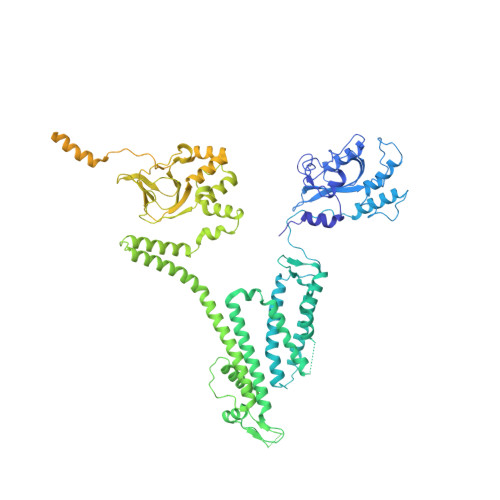Mechanism underlying delayed rectifying in human voltage-mediated activation Eag2 channel.
Zhang, M., Shan, Y., Pei, D.(2023) Nat Commun 14: 1470-1470
- PubMed: 36928654
- DOI: https://doi.org/10.1038/s41467-023-37204-6
- Primary Citation of Related Structures:
7YID, 7YIE, 7YIF, 7YIG, 7YIH, 7YIJ - PubMed Abstract:
The transmembrane voltage gradient is a general physico-chemical cue that regulates diverse biological function through voltage-gated ion channels. How voltage sensing mediates ion flows remains unknown at the molecular level. Here, we report six conformations of the human Eag2 (hEag2) ranging from closed, pre-open, open, and pore dilation but non-conducting states captured by cryo-electron microscopy (cryo-EM). These multiple states illuminate dynamics of the selectivity filter and ion permeation pathway with delayed rectifier properties and Cole-Moore effect at the atomic level. Mechanistically, a short S4-S5 linker is coupled with the constrict sites to mediate voltage transducing in a non-domain-swapped configuration, resulting transitions for constrict sites of F464 and Q472 from gating to open state stabilizing for voltage energy transduction. Meanwhile, an additional potassium ion occupied at positions S6 confers the delayed rectifier property and Cole-Moore effects. These results provide insight into voltage transducing and potassium current across membrane, and shed light on the long-sought Cole-Moore effects.
Organizational Affiliation:
Fudan University, 200433, Shanghai, China.















